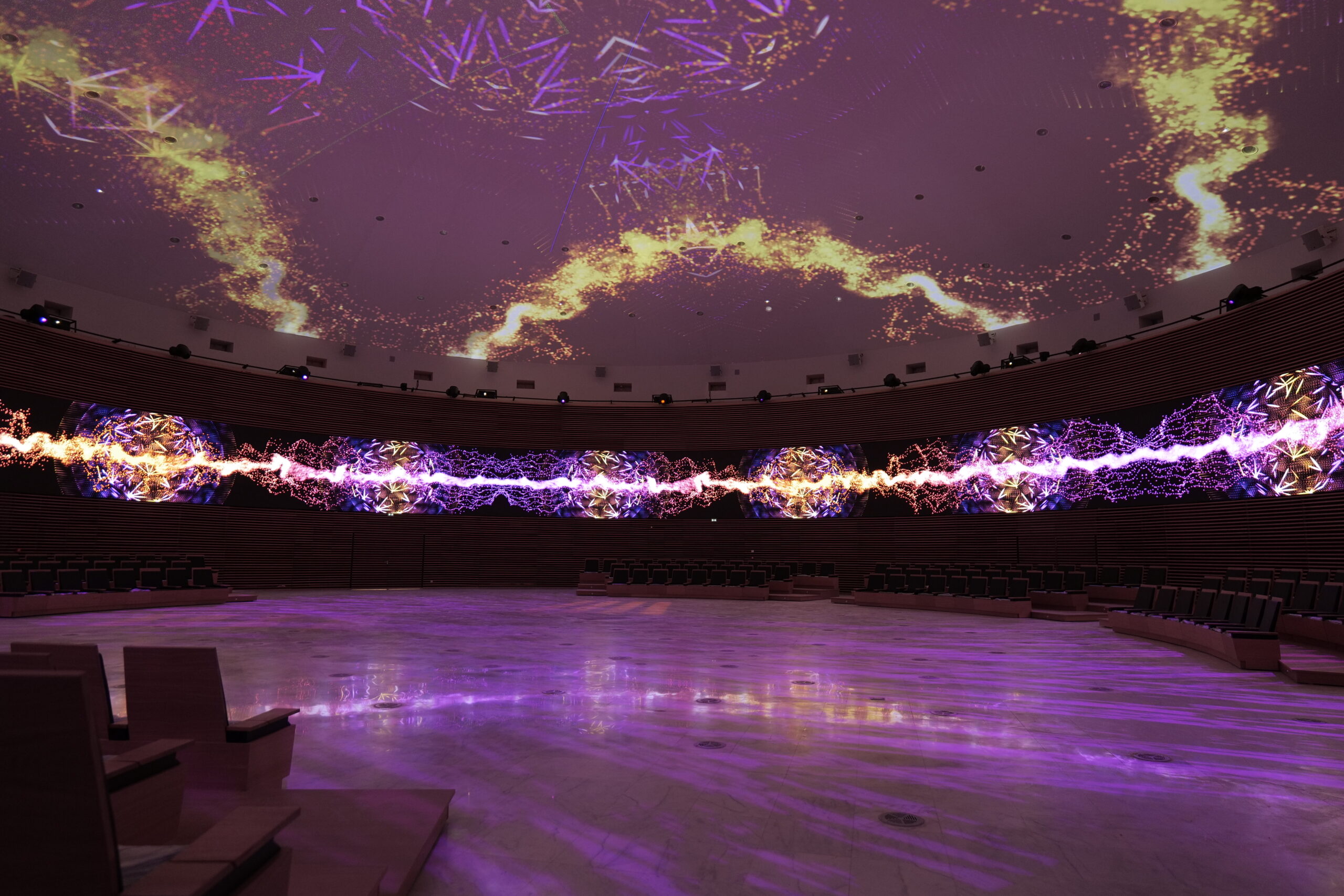
Innovation Spotlight: The Current AV Trends
Shaping the Industry
The audio-visual industry is an ever-evolving field, with technology advancements and consumer preferences creating constant change. Several exciting features of AV technology and trends are taking center stage, continuing to transform how we experience audio and video content. Here are just a few noteworthy trends we’ve seen continue to develop over recent times.
Immersive Technologies
Immersive AV experiences have transcended novelty and are now integral to how we consume media. Technologies like virtual reality (VR) and augmented reality (AR) are not only impacting entertainment but are also making their mark in education, healthcare, and training. The integration of VR headsets and AR applications into various platforms is creating a new dimension in storytelling and engagement. This means continuing to design AV technology such as interactive digital signage and displays with crystal clear clarity and high resolution are key to adhering to this trend of fully immersive experiences.

8K Resolution
Touchless interfaces, driven by the need for hygiene and convenience, have become prevalent. Gesture control and touchless technology have continued to be favored in solutions such as kiosks, digital signage, interactive displays, and more. The demand for higher resolutions continues to rise. For example, 8K displays, with their astounding pixel density, offer unparalleled visual clarity. As content creators and filmmakers adapt to this technology, we can expect more stunning visuals, whether in living rooms, the cinema, or in digital art exhibitions.

dvLED Video Walls
dvLED video walls have gained immense popularity in recent years. These modular and flexible displays are becoming increasingly affordable and offer superior image quality and brightness. They are perfect for countless applications, from retail and corporate environments to entertainment venues and even residential spaces. What sets dvLED video walls apart is their ability to create unique and immersive visual experiences. Their seamlessness, vibrant colors, and ability to create custom configurations make them an AV trend to watch as they continue to redefine the way we interact with visual content.

Voice Control and AI
Voice-activated control systems have evolved significantly with the help of AI and machine learning. Devices like Amazon’s Alexa, Google Assistant, and Apple’s Siri have made voice control an essential part of our homes. We can expect more sophisticated voice-activated features in audio-visual systems, further simplifying interaction.

Audio Experiences
The AV industry is not just about visuals; audio plays an equally crucial role in creating immersive experiences. Spatial audio technologies have become mainstream, providing a three-dimensional sound experience. This trend extends to both home entertainment and commercial applications, such as cinemas and live events. In addition to spatial audio, the rise of object-based audio allows sound designers to precisely position and move audio elements in a 3D space, making audio experiences more engaging and realistic. This trend is changing the way we perceive and enjoy sound, adding a new dimension to our AV experiences.

IoT and Smart Integration
The Internet of Things (IoT) has made its mark on the AV industry by enabling smart integration and automation. AV systems can now be seamlessly integrated with other smart devices and controlled through voice commands or mobile apps. This not only enhances convenience but also opens the door to energy-efficient solutions and predictive maintenance. Smart meeting rooms, for example, can automatically adjust lighting, temperature, and AV settings based on occupancy and user preferences.

Content Personalization
Thanks to data analytics and AI, content personalization has reached new heights. Streaming platforms and OTT services are using algorithms to curate content based on viewing history and preferences. This trend is expected to grow, offering viewers more relevant and engaging content.

Video Conferencing
The COVID-19 pandemic accelerated the adoption of video conferencing technologies, making them an integral part of remote work and communication. Even as in-person meetings become more mainstream again, the video conferencing trend continues to evolve. The latest AV trends in video conferencing include AI-driven enhancements, such as background noise cancellation, improved video quality, and more realistic virtual backgrounds. Hardware and software integrations, like Zoom Rooms and Microsoft Teams Rooms, offer a seamless and enhanced conferencing experience, catering to the hybrid work environment.

Cloud-Based AV Management
Cloud-based AV solutions are becoming increasingly popular for their flexibility and scalability. Instead of relying on hardware on-site organizations can stream content, collaborate, and manage their AV systems from the cloud. This trend simplifies installation, maintenance, and updates, making it an attractive option for businesses looking to modernize their AV infrastructure.
The AV industry is a dynamic and exciting space that keeps evolving. The trends are shaping the future of AV experiences, promising to offer more immersive, personalized, and sustainable futures as they continue to develop. As technology continues to advance, our expectations for AV experiences will rise, pushing manufacturers and content creators to innovate to meet these demands. We can expect even more exciting developments in the years to come and staying on top of these trends is essential for businesses looking to harness the power of AV.